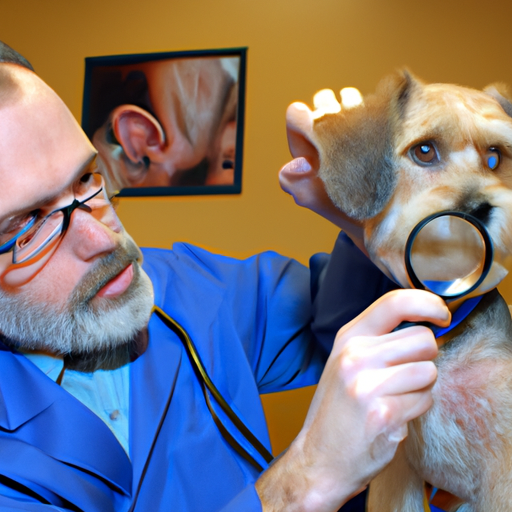If you’ve noticed a swelling in your dog’s ear, it’s only natural to be concerned. Puffy ears in dogs can be a symptom of several issues, including infections, allergies, and even bites from insects or other animals. As a responsible pet owner, it’s crucial to understand the potential causes, symptoms, and treatments for this condition.
Table of Contents:
- Common Causes of Puffy Ears in Dogs
- Symptoms to Look for
- Treatment and Prevention
- When to Visit the Vet
- FAQs
Key Takeaways:
- Puffy ears in dogs can have several causes, including infections, allergies, and bites.
- Symptoms can range from mild discomfort to severe pain, and treatment depends on the underlying cause.
- Regular ear cleaning and routine vet check-ups can help prevent most ear issues in dogs.
Common Causes of Puffy Ears in Dogs
One of the most common causes of puffy ears in dogs is an ear infection, which can be bacterial or yeast-based. These infections often occur when moisture gets trapped in the ear canal, creating a breeding ground for bacteria or yeast. This detailed article from the American Kennel Club provides more information about ear infections in dogs.
Another frequent cause is an allergic reaction. Just like humans, dogs can have allergic reactions to a variety of substances, including food, pollen, dust mites, and certain chemicals. These allergies can cause inflammation in the ear, leading to swelling.
Foreign objects or insect bites can also lead to puffiness in the ear. Dogs are curious creatures and often explore their environment with their noses and mouths. This can sometimes lead to small objects getting stuck in their ears or bites from insects that cause an allergic reaction.
Symptoms to Look for
If your dog’s ear appears puffy, it’s crucial to observe them for other symptoms. These may include:
- Scratching or pawing at the ear
- Shaking their head excessively
- Redness or discharge from the ear
- A foul smell coming from the ear
- Appearing to be in pain when the ear is touched
Treatment and Prevention
The treatment for your dog’s puffy ear will depend on the underlying cause. Infections are typically treated with antibiotics or antifungal medications, while allergic reactions can usually be managed with antihistamines or steroids. If a foreign object is the culprit, your vet will need to remove it.
Prevention is always better than cure. Regular ear cleaning is crucial for preventing infections, while routine vet check-ups can help detect any issues early.
You may find this guide on how to clean your dog’s ears safely and effectively helpful.
When to Visit the Vet
If your dog’s ear remains puffy for more than 24 hours, or if they seem to be in pain, it’s important to make a visit to the vet. Your vet can conduct a thorough examination and recommend the appropriate treatment based on the cause of the swelling.
Some severe ear conditions, such as hematomas or tumors, can also cause puffiness. These conditions require professional veterinary care, and you can learn more about them here.
FAQs
Q: Can I treat my dog’s puffy ear at home?
A: While mild cases of swelling may resolve on their own, it’s always best to consult with your vet before attempting any home treatments.
Q: How can I prevent my dog’s ears from becoming puffy?
A: Regular cleaning and routine vet check-ups are the best ways to prevent most ear issues. You should also monitor your dog’s diet and environment to manage any potential allergens.
Q: Should I be worried if my dog’s ear is puffy?
A: While a puffy ear is often a sign of a minor issue like an infection or allergic reaction, it can sometimes be a symptom of a more serious condition. If your dog’s ear remains puffy for more than 24 hours, or if they seem to be in pain, you should visit the vet.
Being aware of your dog’s health is essential in maintaining their wellbeing. By understanding the potential causes of a puffy ear, you can ensure that your dog gets the care they need when they need it. Remember, when in doubt, always consult your vet or a trusted dog health resource.



